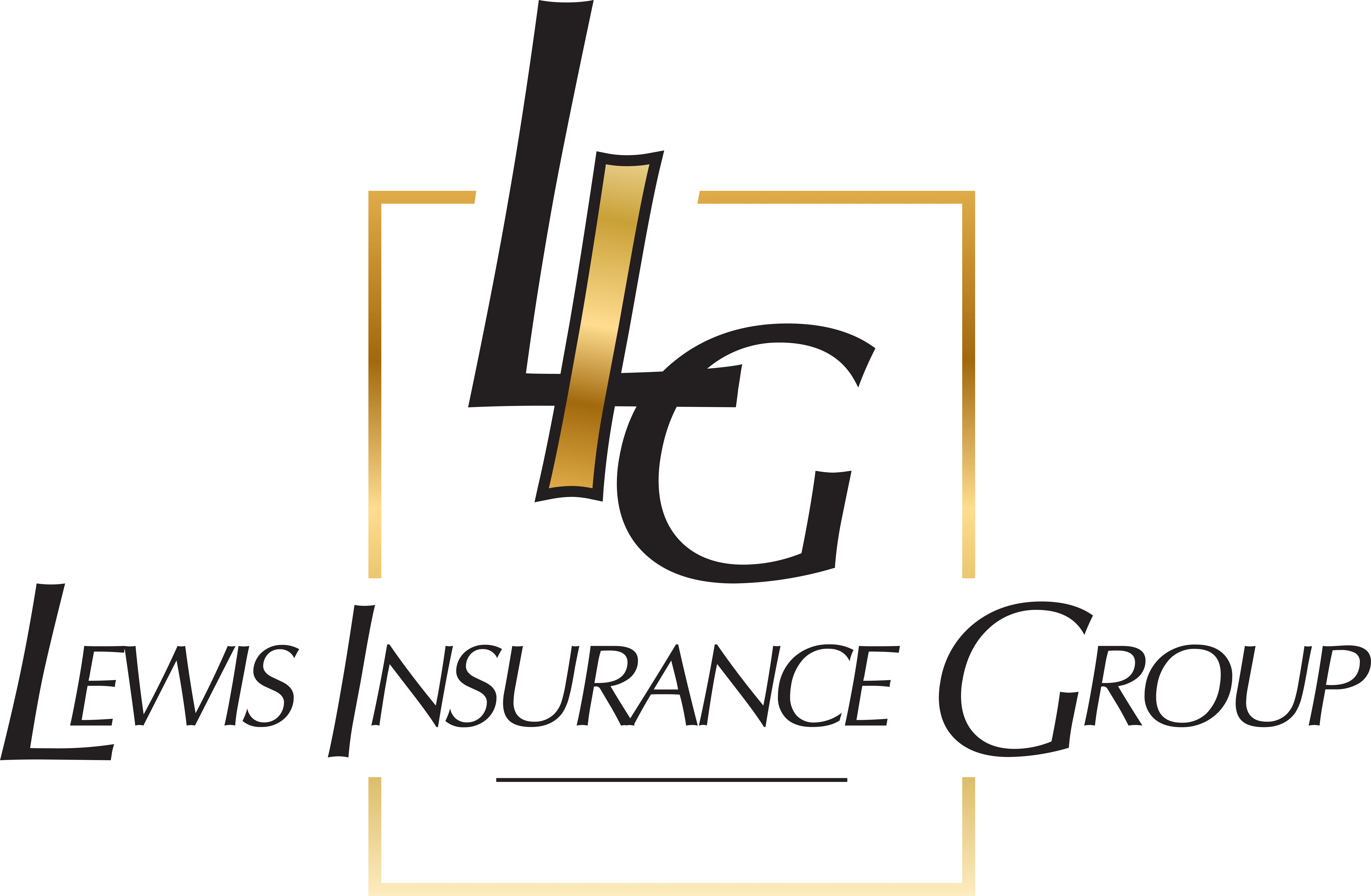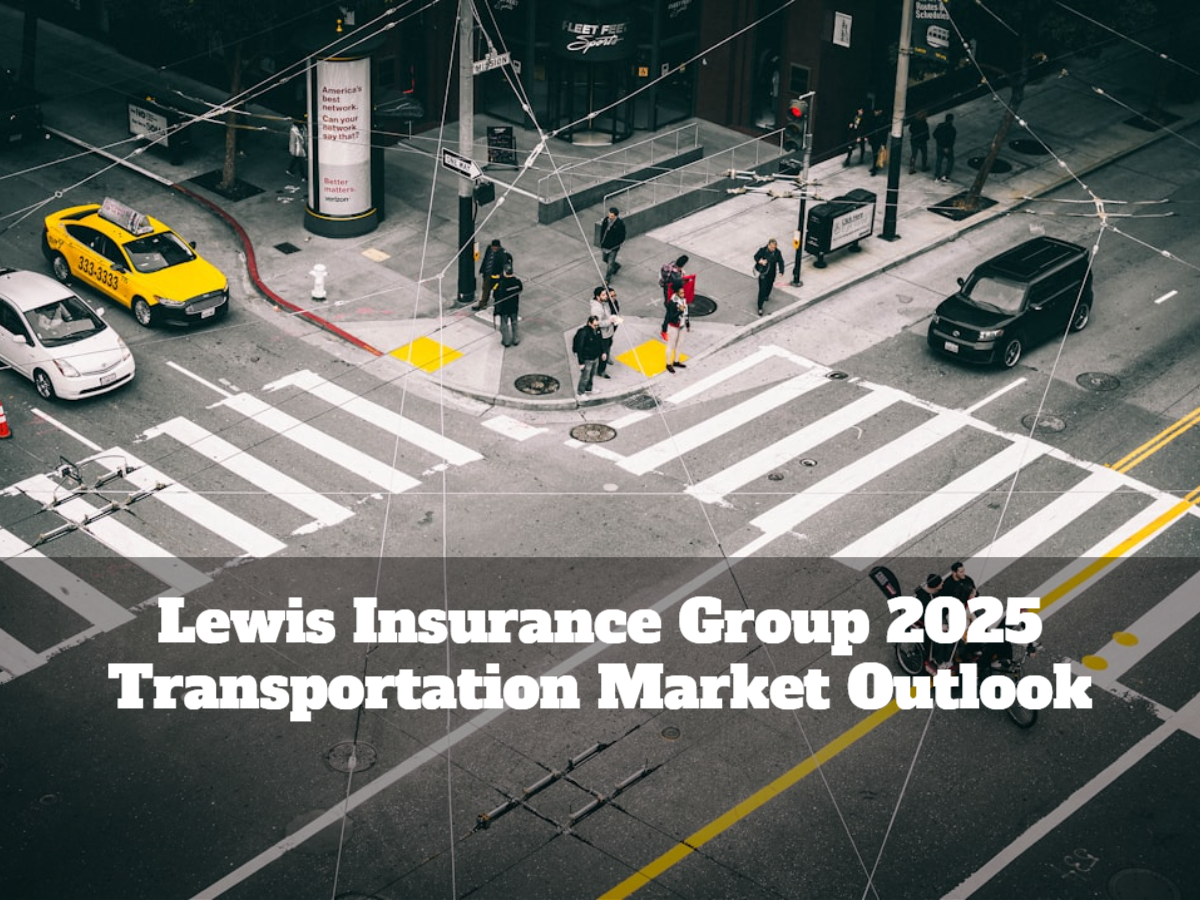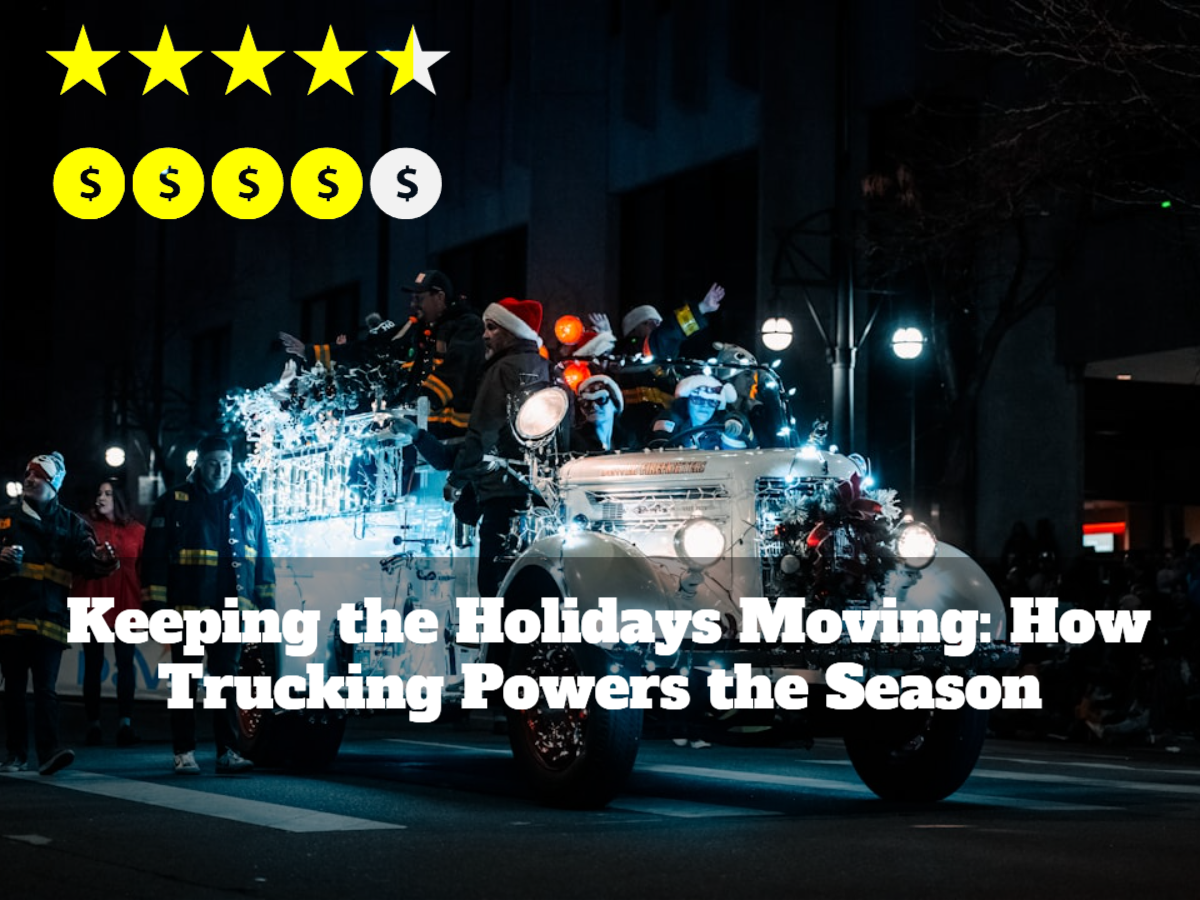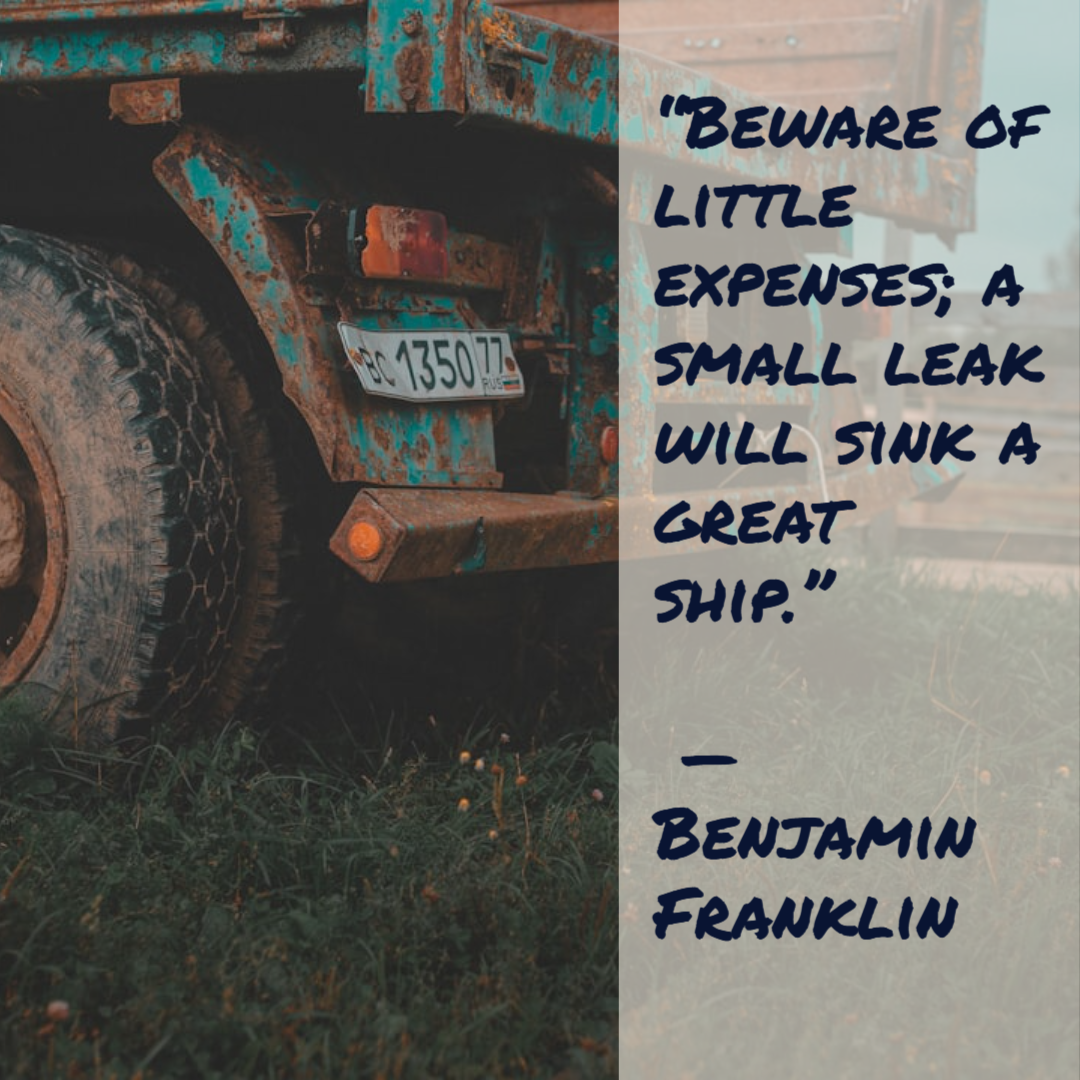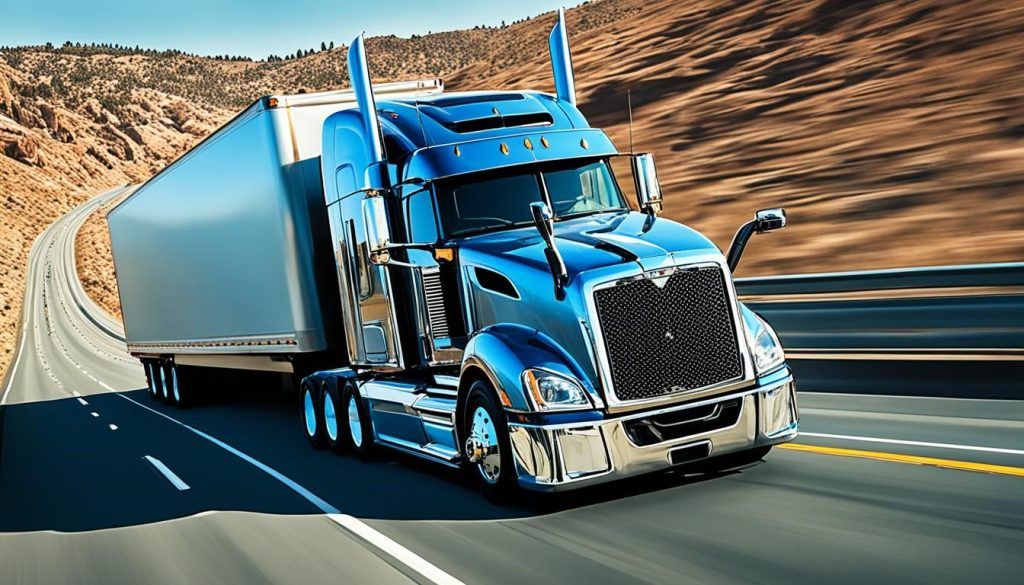The Trucking Insurance Blog
Cash Flow: How Underprepared Companies Face Financial Struggles Due to Insurance Premiums
Dustin Lewis
Running a business comes with its fair share of challenges—managing operations, employees, and of course, finances. But one of the most overlooked cash flow killers is commercial auto insurance premiums. Many business owners assume their commercial auto insurance functions the same way as their personal auto insurance, only to be blindsided by unexpected costs, delayed billing adjustments, and large down payments that can disrupt their entire financial plan.
As an insurance agent, I see this mistake all the time. The unfortunate truth? A lack of preparation and understanding of commercial insurance can put a serious strain on your business's cash flow, making it harder to reinvest, pay employees, or even stay afloat. Let’s dive into how these miscalculations can turn into costly financial headaches—and how to avoid them.
1. The Illusion of Immediate Policy Changes – When Your Payments Don’t Match Reality
Many business owners assume that removing a truck from their policy means their bill will immediately go down. This assumption is true for personal auto insurance, where payments adjust in real time. However, commercial auto insurance often operates on agency billing, meaning a finance company is involved. This changes everything.
moreThe Cost of a Bad CSA Score: How It Affects Your Business & Insurance
Dustin Lewis
What is a CSA Score and Why Does It Matter?
The FMCSA’s Compliance, Safety, and Accountability (CSA) program is designed to measure how safely you operate your fleet. Your CSA score is based on violations, roadside inspections, and crash reports.
Think of it like a credit score for your trucking company—but instead of determining loan eligibility, it dictates:
✔️ How much you pay for commercial insurance
✔️ Whether brokers and shippers will work with you
✔️ If you’re at risk of a DOT audit
✔️ Whether your operating authority is in jeopardy
A high CSA score (which is bad, by the way) can flag you as a risk to FMCSA brokers, insurance underwriters, and freight brokers looking for reliable carriers. The worse your score, the harder (and more expensive) it becomes to operate.
How a Bad CSA Score Affects Your Trucking Business1. Skyrocketing Insurance Premiums (Or Worse – No Coverage At All)
Commercial auto insurance providers look at your CSA score when setting premiums. A poor score makes you a high-risk carrier, which means higher rates or even policy cancellations.
moreLewis Insurance Group 2025 Transportation Market Outlook
Dustin Lewis
As we roll into 2025, the transportation insurance landscape is more dynamic and challenging than ever. At Lewis Insurance Group, we’re breaking down the key trends, challenges, and opportunities shaping the year ahead. Here’s what you need to know to navigate this evolving market.
1. Challenges in the Transportation Sector
The industry continues to face persistent headwinds:
- Low Freight Rates: Profit margins are tightening, especially for small and mid-sized fleets.
- Driver Shortages: Recruitment and retention challenges limit growth opportunities.
- Rising Loss Severity: Inflation in medical and property damages, along with increased legal costs, is driving claim expenses sky-high.
In states like California, Georgia, and Texas, rates are rising at an accelerated pace, and regulations, such as New Jersey’s new $1.5M financial responsibility limits, add additional complexity for operators.
2. Shifts in Insurance Coverage
Insurance carriers are rethinking their strategies:
- Hardening Auto Insurance Market: Preferred trucking risks are seeing moderate rate increases, but distressed accounts face severe hikes.
- Exiting Specialized Markets: Classes like non-emergency medical transport (NEMT) and last-mile delivery are harder to insure.
- Electric Vehicles (EVs): The adoption of electric trucks poses new underwriting challenges due to high repair costs and limited claims data.
Keeping the Holidays Moving: How Trucking Powers the Season
Dustin Lewis
The holiday season is the busiest time of the year, not just for retailers and shoppers, but for the trucking industry—the backbone of the holiday economy. As people enjoy holiday meals, decorate their homes, and exchange gifts, an army of trucks and drivers is working tirelessly to ensure everything arrives on time. This annual logistical surge is a story of dedication, resilience, and opportunity.
The Freight Frenzy: Why the Holidays Are Critical for Trucking
The weeks between Thanksgiving and Christmas see freight volumes soar, driven by a trifecta of consumer behavior: Black Friday shopping sprees, Cyber Monday clicks, and holiday gifting. E-commerce alone has revolutionized this period, with millions of packages crisscrossing the country daily. According to the American Trucking Associations (ATA), freight activity increases by 20–30% during the holiday season, making it the most lucrative quarter for the industry.
Retailers prepare months in advance, stocking up on inventory to meet demand. Grocery stores bring in seasonal delicacies, while warehouses are flooded with products ranging from toys to tech gadgets. Trucks are the essential link in this chain, ensuring goods move efficiently from manufacturers to stores and homes.
moreDash Cameras: The Hidden Goldmine for Trucking Companies—It's More Than Just Safety!
Dustin lewis
Dash Cams = More Money in Your Pocket
When you think of dash cameras, you probably picture them as safety tools, right? Something to keep an eye on the road, monitor driver behavior, and provide footage in case of an accident. And while that’s all true, here’s what most people don’t know: dash cams are a financial powerhouse.
Sure, they’re great for safety—but they’re also incredible at saving your fleet serious cash. Think lower insurance premiums, cheaper maintenance, better fuel efficiency, and even protection from costly lawsuits. Let’s dive into how dash cams aren’t just watching the road—they’re watching your bottom line, too.
1. Slashing Insurance Premiums: The Secret Weapon
Want to know a quick way to slash those ever-climbing insurance premiums? Dash cams. Insurance companies love them, and here’s why: fleets with dash cams are seen as lower-risk, which means insurers are willing to cut you a deal.
Here’s How It Works:
- Instant Discounts: Many insurers offer discounts just for having dash cameras installed. Who wouldn’t want lower monthly premiums?
- Claim Resolutions in Record Time: Dash cams provide instant proof in accidents, speeding up claim resolutions and keeping costly disputes at bay.
- No More Fraud: Cameras don’t lie. Dash cam footage can stop fraudulent claims in their tracks, saving you from expensive payouts.
Women in Trucking: Signaling a More Inclusive and Diverse Future for the Industry
Dustin Lewis
The trucking industry, once seen as a man’s domain, is witnessing a powerful shift. With more women stepping into driver seats, leading fleets, and starting their own businesses, they’re proving that trucking is an industry open to anyone with the grit and drive to succeed. And now, with new opportunities and support, women are transforming this essential sector.
Breaking Barriers and Hitting the Road
Today, women make up about 10% of all truck drivers—a number that’s steadily growing. In fact, according to the National Transportation Institute, women now account for 18.5% of students in driver training programs. This isn’t just a statistic—it’s a signal that the future of trucking is becoming more inclusive and diverse.
What’s behind this growth? It’s a combination of the ongoing driver shortage, the industry’s push for diversity, and the promise of opportunity. Trucking offers women more than just a paycheck; it offers freedom, flexibility, and the chance to explore new frontiers.
But what’s drawing women in? For many, it’s the flexibility to manage their own schedules, the opportunity to travel, and the increasing support from organizations like the Women in Trucking Association. These programs encourage women to pursue trucking careers and provide mentorship, ensuring they have the skills and confidence to succeed in a field that’s always been perceived as a man’s job.
moreCut Your Commercial Auto Insurance Costs with a Clean CSA Score
Dustin Lewis
As a trucking professional, managing costs is essential to the success of your business. One significant factor that directly impacts your expenses is your insurance premiums. What many don’t realize is this: Your CSA (Compliance, Safety, Accountability) score directly affects how much you pay for insurance.
In this post, we’ll explain why CSA scores matter to insurance companies and how you can leverage them to secure better rates on your commercial auto insurance.
What Are CSA Scores?
Before we explore how CSA scores impact insurance, let’s briefly revisit what they are. The Compliance, Safety, Accountability (CSA) program is managed by the Federal Motor Carrier Safety Administration (FMCSA) and is designed to improve safety for commercial motor vehicle (CMV) operators.
CSA scores are determined by your performance in several safety-related categories, including:
- Unsafe Driving
- Hours-of-Service (HOS) Compliance
- Vehicle Maintenance
- Controlled Substances/Alcohol
- Driver Fitness
- Hazardous Materials Compliance
- Crash Indicator
Your scores in these categories are updated regularly based on inspections, violations, and crash reports. A higher CSA score indicates more violations, which signals higher risk to both safety regulators and insurance providers.
moreUSDOT Number Requirements and Insurance Tips for New Carriers
Dustin Lewis
Launching your trucking business with a new DOT Authority is thrilling, but you need to get your insurance in place before you hit the road. Having the right coverage is not only about protecting your company but also about making sure you comply with regulations. Let’s dive into the types of insurance you need, how your CSA (Compliance, Safety, Accountability) scores affect your premiums, and why working with an insurance agent is better than a call center.
1. Essential Insurance to Get Your Business Rolling
Here’s a simple truth: without proper insurance, your trucking business could be derailed before it even begins. As a new DOT Authority owner, these are the key coverages you need:
Primary Liability Insurance: This is the cornerstone of commercial auto insurance for small businesses. It covers damages and injuries you may cause while operating your vehicle, and it’s legally required by the FMCSA. Looking for affordable commercial vehicle coverage options early on is smart—it’s your business’s first layer of defense.
Cargo Insurance: If you’re hauling goods, you need cargo insurance for delivery businesses. It protects the freight you carry, ensuring that any losses due to damage or theft are covered. In today’s market, clients expect you to be prepared for anything.
more
Want Better CSA Scores and Lower Insurance Rates? Do This!
Dustin Lewis
In the trucking and transportation industry, maintaining strong fleet safety practices is essential—not only for the safety of your drivers and cargo but also to reduce liability and protect your commercial auto insurance rates. Whether you’re managing a small fleet or a large operation, improving safety helps avoid accidents, lowers costs, and improves your company’s CSA scores. Here’s how to enhance your safety culture and reduce violations, helping you safeguard your business and optimize your transportation insurance coverage.
Conduct Regular Internal Safety Audits
Regular safety audits help you identify potential risks and issues before they escalate. By reviewing drivers’ hours of service compliance, inspecting vehicles, and ensuring documentation is complete, you’re not only preparing for official inspections but also strengthening your overall safety program. This proactive approach can prevent accidents and keep your commercial auto insurance rates in check.
Implement Frequent Safety Training
Regular safety training is a must for every fleet. By conducting monthly safety sessions, you can keep your drivers up to date on changing transportation laws, safety protocols, and commercial liability insurance requirements. Using real-world examples during training helps drivers better understand the importance of compliance, which can reduce violations and improve your company’s general liability insurance standing.
more
"The Amazon Effect: How Walmart and Target Are Joining the Race to Transform the Trucking Industry
Dustin Lewis
The e-commerce explosion has changed the way people shop, and the trucking industry is feeling the heat—big time. As consumers expect faster deliveries and more convenience, truckers are the unsung heroes behind every “Order Now” click. But it’s not all smooth highways. The trucking industry is facing major challenges as it tries to keep up with skyrocketing demand.
Let’s break down how e-commerce is turbocharging trucking (and why it’s making fleet managers sweat a little more).
1. Speed is the New Standard
Remember when waiting 5-7 days for a delivery was normal? That’s ancient history. Nowadays, customers expect their packages faster than ever—next-day, same-day, sometimes even within hours. For trucking companies, that means tighter delivery windows, more pressure, and a lot more trucks on the road.
As Chris Spear, President of the American Trucking Associations (ATA), recently said, “The demand for faster, more efficient deliveries has never been higher. Our industry is being asked to do more, faster—and with fewer drivers available to meet the rising demand.” Keeping up with this requires serious planning, more drivers (if you can find them), and tech that ensures routes are as efficient as possible.
moreTrucking Industry Trends to Watch in 2025
Dustin Lewis
As we head into 2025, the trucking industry is set for some exciting changes. From electric rigs to self-driving trucks, there’s a lot happening that will shape the future of transportation. Whether you're a driver, fleet manager, or business owner, these are the trends you need to watch. Let’s dive in!
1. Electric Trucks Are Taking Over
Electric trucks are no longer just a concept—they’re here, and they’re about to become a major player in the industry. With advancements in battery technology, longer ranges, and faster charging times, electric trucks are becoming a real option for more than just short-haul routes. Major manufacturers like Tesla, Volvo, and Daimler are rolling out new models, and more charging stations are popping up along key routes. In addition, governments are offering tax incentives for going electric, making it easier for businesses to take the plunge.
Why It Matters: Companies that switch to electric trucks will see savings on fuel and maintenance over time. Plus, being eco-friendly isn’t just a trend—it’s something more customers care about. Those who adopt early will benefit from reduced emissions, tax breaks, and possibly lower insurance premiums. And let’s not forget—it’s a great PR move.
moreWhy Your Insurance Premium is Like Real Estate: It's All About Location
Dustin Lewis
We’ve all heard the saying, “Location, location, location.” It’s usually the golden rule in real estate, but what if I told you the same thing applies to your insurance premium? Yep, that’s right—where you park your business could be costing you more than just rent. Let’s unpack why your address might be driving up your insurance rates (and no, it’s not just because your office is near that great taco truck).
Risky Business (Literally)
Think of your insurance company as a cautious friend—someone who’s always planning for the worst. They’re not just thinking about how safe you are; they’re worried about where you are. If your business is in an area with bumper-to-bumper traffic, high crime rates, or natural disasters waiting to happen, they’re going to charge more to protect you. Why? Because every time you turn the key or open the doors, you’re rolling the dice a little more than someone operating in a quieter neighborhood.
Big City Blues vs. Small Town Zen
Now, let’s imagine two trucking companies: one is smack in the middle of a big city, the other is out in the countryside. Mr. City has to deal with crazy traffic, fender-benders, and the occasional storm knocking over trees. Meanwhile, Mrs. Rural enjoys open roads, fewer accidents, and a slower pace of life. Guess who’s paying more for insurance? (Spoiler alert: It’s Mr. City.) That’s because insurers are looking at all those extra risks and thinking, “Yeah, we’re going to need more to cover this guy.”
moreNavigating Rising Insurance Costs with Driver Finishing Programs and Apprenticeships
Dustin Lewis
In an industry grappling with a high turnover rate, the second-highest rate of fatal work injuries, and escalating insurance costs, implementing effective safe driver programs has become non-negotiable. Fatal crashes involving commercial trucks have surged nearly 40% from 2009 to 2021, and incidents involving inexperienced drivers are on the rise. In fact, the percentage of fatal large truck and bus crashes involving new drivers increased from 4.6% in 2017 to 7.4% in 2022. This spike in crash frequency and severity has prompted insurers to hike premiums for carriers — rising from 6.4 cents per mile in 2013 to 8.8 cents per mile in 2022.
The industry is also battling a driver shortage exceeding 70,000 drivers, forcing fleet operators into a constant cycle of hiring and training inexperienced drivers. This issue is exacerbated by trucking's notoriously high turnover rates, but a solution lies in driver finishing programs and apprenticeships. These programs not only enhance safety but also help reduce costs and improve driver retention.
Driver Finishing Programs
Finishing programs help close the gap between classroom training and the realities of the road. Newly licensed drivers are paired with experienced mentors who guide them through real-world challenges such as urban driving, adverse weather, and heavy traffic conditions. This one-on-one training is crucial in helping new drivers build the confidence and skills necessary for safe, effective driving. Moreover, these programs emphasize defensive driving techniques, a key factor in reducing accidents and lowering insurance claims.
moreBig Rig Safety Technology and the Impact on Trucking Insurance Rates
Dustin Lewis
The transportation industry has seen significant changes with the rise of safety technology in big rigs. From collision avoidance systems to lane departure warnings, these advancements are reshaping how fleets operate, offering enhanced protection for drivers and cargo. While these technologies help reduce accidents, trucking companies are still facing rising insurance premiums.
Why the Premium Hikes?
Despite the implementation of advanced safety features, insurance rates for commercial trucks continue to climb. A few key factors drive this trend:
Litigation & Nuclear Verdicts: Legal claims in trucking accidents often result in multi-million dollar settlements, also known as “nuclear verdicts.” These high payouts are putting pressure on insurance companies to raise rates to cover potential liabilities.
Increased Repair Costs: While safety tech helps reduce the likelihood of accidents, when accidents do occur, the high-tech equipment itself can be costly to repair or replace. This adds to the overall cost of claims.
Driver Shortages: The industry is also grappling with a driver shortage, which can lead to overworked or less experienced drivers behind the wheel. This increases the likelihood of accidents, contributing to higher claims.
more
How to Manage Fleet Insurance in a Hard Market
Dustin Lewis
Insurance costs for fleet operators are continuing to rise, with many companies seeing double-digit premium increases. But why? Legal settlements in accidents and high repair costs are driving rates up. So, what can you do to keep your insurance manageable?
1. Focus on Safety
Keep your fleet’s safety scores low by preventing violations, such as tire or light failures. Implement a solid safety program, and make sure you’re using tools like telematics to track and improve driver behavior.
2. Hold Drivers Accountable
Safety programs are only as strong as their enforcement. Let your drivers know the consequences for unsafe driving and implement consistent accountability.
3. Manage Claims Proactively
Stay ahead of claims by reporting incidents quickly and keeping thorough documentation. Work closely with your insurance provider to manage claims efficiently and cost-effectively.
4. Be Transparent with Your Broker
Keep your insurance broker informed of any changes to your fleet’s operations, such as new drivers, changes in cargo, or violations. Transparency helps brokers negotiate better rates with insurers.
more